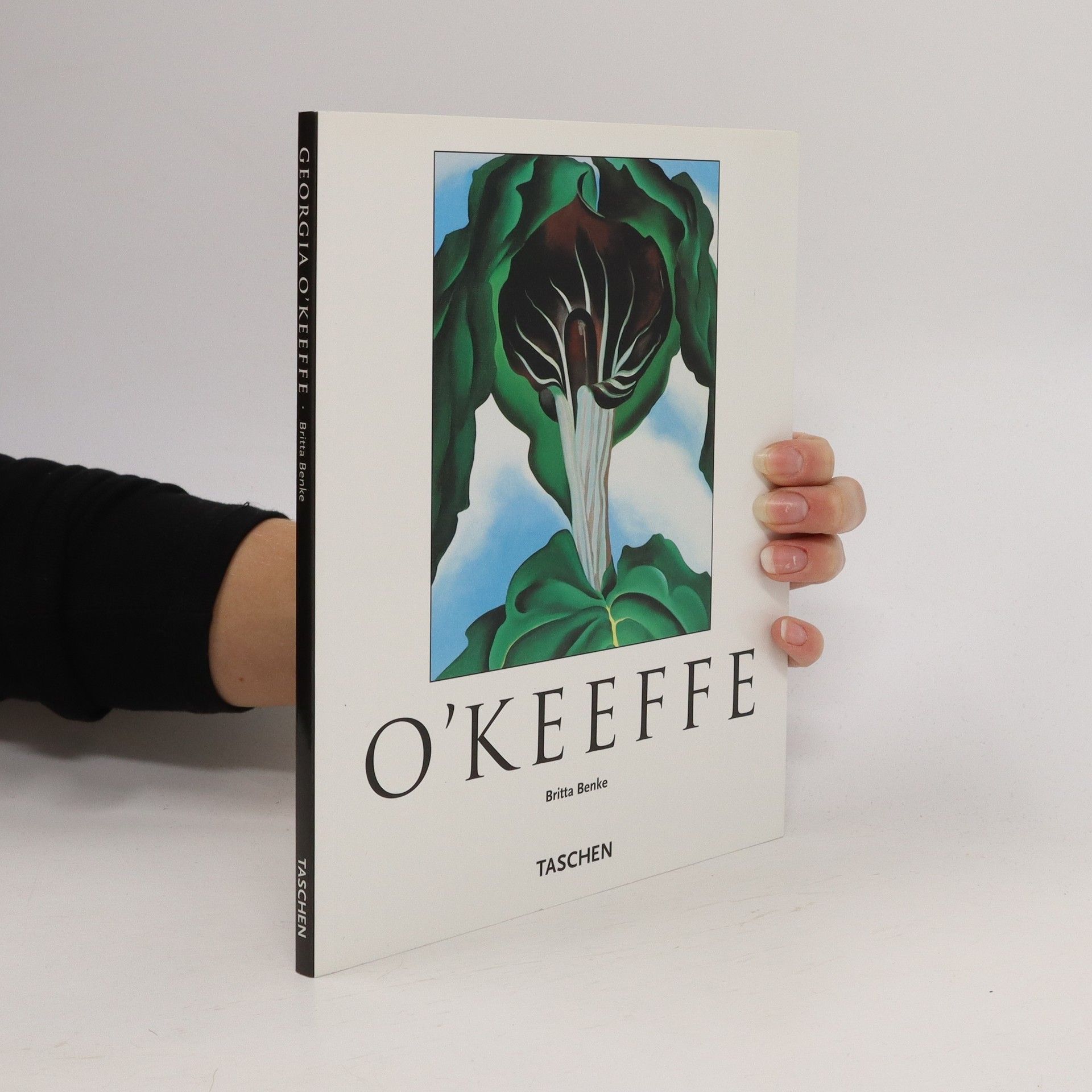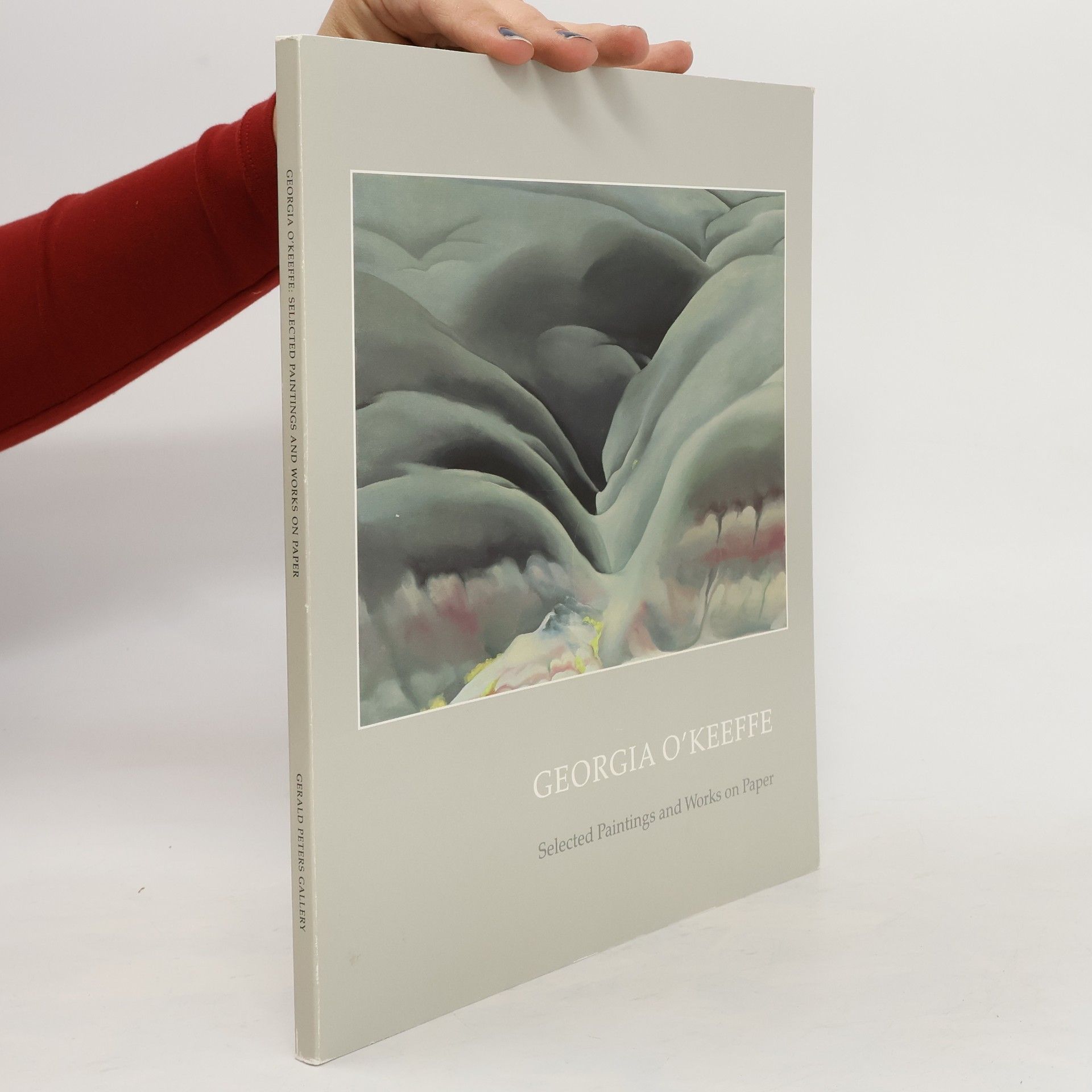Georgia O'Keeffe. Selected Paintings and Works on Paper
- 108pagine
- 4 ore di lettura
Georgia O'Keeffe è stata un'artista americana il cui lavoro è intrinsecamente legato al Sud-ovest americano. Trovò ispirazione artistica lì, in particolare nel New Mexico, dove si stabilì in età avanzata. I suoi dipinti, noti dagli anni '20, fondono fluidamente astrazione e rappresentazione. È rinomata per le sue raffigurazioni di fiori, rocce, conchiglie, ossa di animali e paesaggi, caratterizzati da forme nitidamente definite e sottili transizioni tonali. O'Keeffe trasformava frequentemente i suoi soggetti in potenti immagini astratte.






Long recognised as a major figure in American art, Georgia O'Keefe has had a number of retrospective exhibitions at leading American museums, each one a major event. Yet no full colour collection of her work has been available until now. This comprehensive volume consists of 108 colour plates accompanied by text written by the artist.
Georgia O'Keeffe / John Loengard: Paintings and Photographs In June 1966, photographer John Loengard was asked by Life magazine to photograph Georgia O'Keeffe in New Mexico, where she had been living since the late 1930s. Georgia O'Keeffe was 79 years old at the time, Loengard was 32, and for three days he observed and photographed the private life of this pioneer artist who virtually redefined American painting. For this unique book, we selected almost fifty of the finest black-and-white pictures Loengard took of the grand, solitary woman in the desert, and juxtaposed them with selected paintings of hers. They record the course of a day in the life of Georgia O'Keeffe from sunrise to sunset, developing their own quiet, mysterious effect. It becomes clear how much the austere poetry of the landscape corresponded to the artist's own self-created world and how her artistic imagination was kindled by bleached bones and an infinite desert. Texts by Georgia O'Keeffe and John Loengard
About the idiosyncratic of O’Keeffe’s careerThe art of American painter Georgia O’Keeffe (1887-1986) is splendid with color and laden with hidden sensuality. O’Keeffe’s name rests mainly on the large-format flower pictures that have assured her an unusual place in the annals of art, between realist and abstract.>Our Basic Art Series study traces the idiosyncratic of O’Keeffe’s career, and numerous illustrations document the most important periods in her lengthy life in art.About the Each book in TASCHEN’s Basic Art series
Birth of the Cool presents art that developed in subtle deviation from the familiar movements of 20th century American painting through retaining their main characteristics as points of reference. The accentuation of the surface, the breaking up of illusionistic space, the opening up of the painting's format to new dimensions in space and time are the lasting constants of American painting. The American tradition in painting is a tradition that is both sensual and severe, intellectual and emotional and above all open to modern society.
A full-color, lavishly illustrated volume presents postcard-sized reproductions of the noted American artist's thirty-two most popular works.
O'Keeffe's 1927 painting expresses her defiant commitment to abstraction and the influences of Kandinsky, Dove and others During the 1920s, Georgia O'Keeffe (1887-1986) became widely known for her paintings of enlarged flowers. But she regularly returned to abstraction, and indeed found it "surprising how many people separate the objective from the abstract." Executed in 1927, Abstraction Blueillustrates that belief, retaining the glowing color, careful modulation and zoomed-in view of the artist's contemporaneous blooms, while forgoing any obligation toward representation. In this latest volume of the MoMA One on One series, curator Samantha Friedman considers how these and other factors converged in the creation of this composition.
Selected Letters of Georgia O'Keeffe and Alfred Stieglitz: 1915-1933
There are few couples in the history of 20th-century American art and culture more prominent than Georgia O'Keeffe (1887–1986) and Alfred Stieglitz (1864–1946). Between 1915, when they first began to write to each other, and 1946, when Stieglitz died, O'Keeffe and Stieglitz exchanged over 5,000 letters (more than 25,000 pages) that describe their daily lives in profoundly rich detail. This long-awaited volume features some 650 letters, carefully selected and annotated by leading photography scholar Sarah Greenough. In O'Keeffe's sparse and vibrant style and Stieglitz's fervent and lyrical manner, the letters describe how they met and fell in love in the 1910s; how they carved out a life together in the 1920s; how their relationship nearly collapsed during the early years of the Depression; and how it was reconstructed in the late 1930s and early 1940s. At the same time, the correspondence reveals the creative evolution of their art and ideas; their friendships with many of the most influential figures in early American modernism (Charles Demuth, Arthur Dove, Marsden Hartley, John Marin, and Paul Strand, to name a few); and their relationships and conversations with an exceptionally wide range of key figures in American and European art and culture (including Duncan Phillips, Diego Rivera, D. H. Lawrence, Frank Lloyd Wright, and Marcel Duchamp). Furthermore, their often poignant prose reveals insights into the impact of larger cultural forces—World Wars I and II; the booming economy of the 1920s; and the Depression of the 1930s—on two articulate, creative individuals.